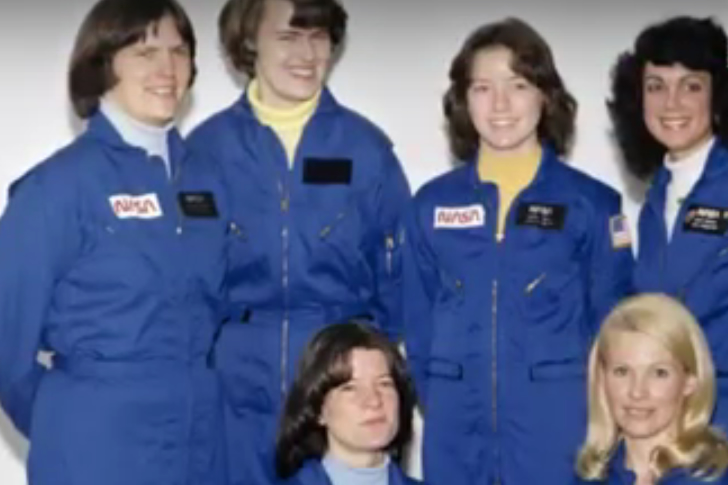The First Women in Space

NASA Astronaut Sally K. Ride became the first American woman in space on June 18, 1983, when she launched aboard the Space Shuttle Challenger on flight STS-7 with her four crewmates. Ride and five other women were chosen for NASA Astronaut Group 8, the first female-only selection class in the United States, back in 1978. NASA extended astronaut selection from only pilots to scientists and engineers with the launch of the space shuttle, and women with degrees became eligible for consideration. On January 16, 1978, NASA made Ride and her classmates public.

The Class of 1978 astronauts became qualified for ground and flight assignments after completing a degree and astronaut training. In late 1981 and early 1982, Ride worked as the Capsule Communicator (CAPCOM) for STS-2 and STS-3, and she became an expert in the use of the shuttle’s robotic arm. Ride was named a Mission Specialist on STS-7, a satellite launch and retrieval mission aboard the Space Shuttle Challenger, by NASA on April 30, 1982. Commander Robert L. Crippen, Pilot Frederick H. “Rick” Hauck, and Mission Specialist John M. Fabian were her crewmates. In January 1983, NASA added physician-astronaut Norman E. Thagard to the crew to perform in-flight studies of space motion sickness, which affected roughly one-third to one-half of all space travelers. Thagard’s inclusion made the crew of a single spacecraft the largest it had ever been.

The crew launched two investment commercial communications satellites, Anik C3 for Telesat of Canada and Palapa B2 for Indonesia, during the six-day flight, which was the most complex in the shuttle program to date. The first Shuttle Pallet Satellite (SPAS-01) was deployed and recovered by Ride using the shuttle’s robotic arm, marking the first time the shuttle was used to return a spacecraft to Earth. As the two spacecraft flew in formation, the SPAS-01 satellite captured some incredible images of Challenger. The first shuttle landing was supposed to take place at Kennedy Space Center, but bad weather in Florida forced a change to Edwards Air Force Base in California. On June 24, the team scored and was credited their first touchdown.

Ride was launched again on STS-7 on the 20th anniversary of the flight of Soviet cosmonaut Valentina V. Tereshkova, who is credited as the first woman in space. Sergey Korolyov, the Soviet Chief Designer, had the idea of sending a woman into space after the successful flight of Yuri Gagarin, the first man in space, in April 1961. He searched beyond the world of military pilots to find a suitable applicant. Although piloting was not a prerequisite for female candidates since the Vostok spacecraft was mostly automated, parachuting was, as Vostok cosmonauts ejected from the capsule and parachuted to the ground separately after reentry. Approximately 400 female candidates were initially screened, and 40 were invited to Moscow for interviews, medical, and other examinations. On February 16, 1962, Valentina Tereshkova was one of five women chosen.

Tereshkova became the first woman in space on Vostok-6 on June 16, 1963, with the call sign Chaika (aка) or Seagull. Her mission was part of the Soviet Union’s second party flight, following the launch of fellow cosmonaut Valery Bykovsky on Vostok-5 two days earlier. The two spacecraft came within a degree of three miles of each other during Tereshkova’s first orbit, and the two cosmonauts communicated via radio before drifting apart and completing their separate missions. She completed 48 orbits around the Earth in three days and landed safely on June 19.

Sally Ride and Valentina Tereshkova are the two women who have made history. Despite the friendship that existed between astronauts and cosmonauts even during the Cold War and the thaw that followed, there is no evidence that the two ever met. They were also credited as trailblazers for women who followed in their footsteps in the exploration of space in their own ways.

Recent Comments